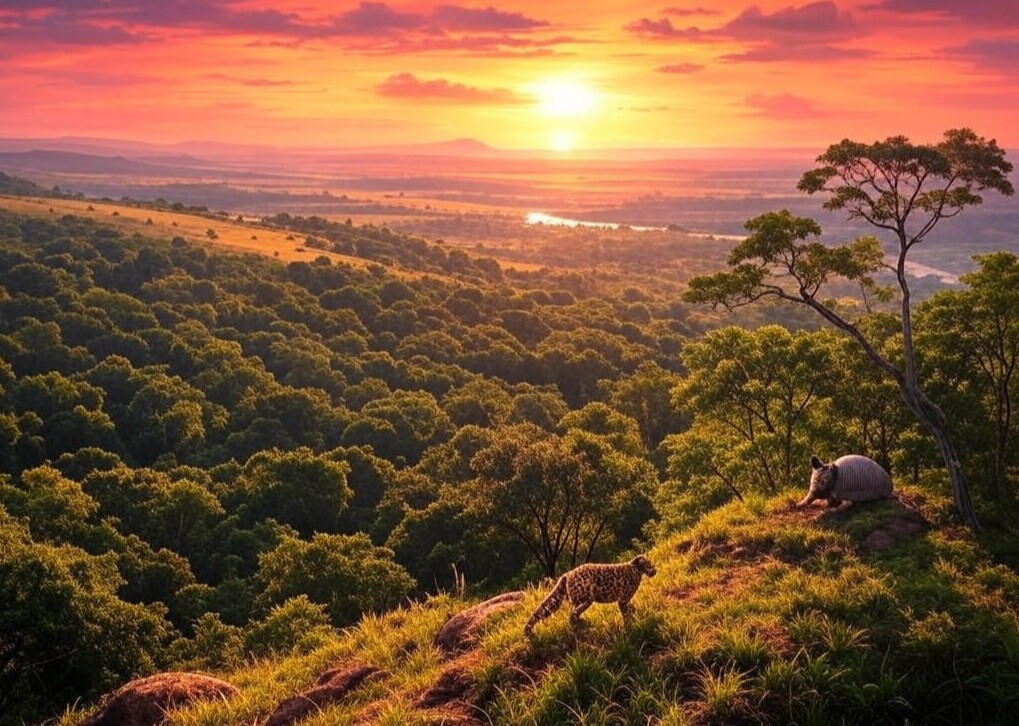
Asunción, Paraguay - Nestled in the heart of South America, the Gran Chaco spans 1.1 million square kilometers across Paraguay, Bolivia, Argentina, and Brazil, making it the second-largest forest in South America after the Amazon.
Boasting an area approximately five times the size of the Korean Peninsula, this region is known as the 'Green Heart' due to its rich biodiversity, home to over 3,400 plant species and around 150 mammal species, including jaguars, pumas, and giant armadillos. It also acts as a global carbon sink, absorbing approximately 13,000 tons of carbon dioxide per square kilometer of trees.
However, this vital ecosystem faces a severe crisis. The Paraguayan Chaco, in particular, is experiencing one of the highest rates of deforestation in the world. In the last two decades, 90,000 square kilometers of forest have disappeared, with deforestation increasing by 78% in 2019.
Every two minutes, an area of forest the size of a football field is cleared. The primary drivers are unsustainable development for soybean cultivation and cattle ranching. Paraguay has a high dependence on cattle farming, and leather produced in the Chaco is exported to the European automotive industry. According to NASA, 20% of the Gran Chaco forest, or 14.2 million hectares, was destroyed between 1985 and 2016.
REDD+ Project Offers a Glimmer of Hope
In response, Paraguayan environmental organization Quadriz is implementing the 'Chaco Green Heart Project' through the REDD+ (Reducing Emissions from Deforestation and Forest Degradation) initiative.
This project aims to halt deforestation, protect biodiversity, and revitalize the local economy. It has currently protected 32,000 hectares of forest and plans to expand to 300,000 hectares. Gabriela Viñales, Director of Quadriz, emphasized the importance of conservation, stating, "The Chaco is a special place that represents Paraguay's unique ecology."
The project collaborates with local communities to monitor endangered species using camera traps, create jobs, and improve residents' lives through the 'Chaco Alert' program. Research initiated in 2021 in collaboration with the National University of Asunción tracks changes in the populations of jaguars and other wildlife, supporting conservation efforts.
The Power of Carbon Markets and International Cooperation
The 'Chaco Green Heart Project' is funded through Verra's Voluntary Carbon Market (VCM). Verra supports the trading of carbon credits, ensuring that revenue generated from forest conservation is reinvested in local communities and climate change mitigation. James Eaton, Director of Conservation at Austria, noted, "This project represents a paradigm shift, generating income from forest protection instead of agricultural expansion."
Paraguay's new carbon credit market legislation is expected to provide further momentum for Gran Chaco conservation. Quadriz and Verra are creating a sustainable future through innovative financial strategies and local partnerships. Protecting forests is key to achieving climate goals, and the Gran Chaco's 'Green Heart' remains a lifeline for the planet and future generations.
[Copyright (c) Global Economic Times. All Rights Reserved.]



























